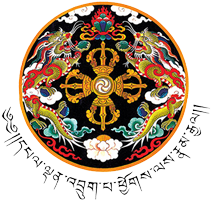Dechenphodrang Ney
Dechenphodrang Ney, Bumdeling Gewog. alt. 2260m. The monastery is hidden in a very idyllic valley amid huge boulders of religious importance near a stream. It has a narrow waterhole in the rock near the monastery believed to be as deep as the huge Tsenden (cypress) tree nearby. The main ney is about half an hour above the monastery. It is about 4-5 hrs walk from Rigsum Gonpa and half an hour from or to the end of the farm road in Woogmanang valley. For international visitors it might be one of the most beautiful monasteries in Bhutan. There is a campsite along the trail across the Woogmanang river.
Contact us
- Dzongkhag Administration Trashi Yangtse, Bhutan
- PABX:(+975) 04781109
- FAX:(+975) 04781109
- Hr Office:(+975) 04781102
- Dzongdag PA:(+975) 04781219
- trashiyangtsedzongkhag@gmail.com
- Postal Code: 46001
Quick Links
- Bhutan Computer Incident Response Team (BtCIRT)
- Online Audit Clearance
- Royal Audit Authority
- E-Sakor(NLC)
- Online Security Clearance Systems
- Ministry Of Health
- Citizen Services Portal
- Online Asset Declaration System
- Online BICMA Licensing Systems
- COVID-19
- Civil Service Information System
- Online PIT Filling
Copyright © 2024 - Trashiyangtse Dzongkhag
